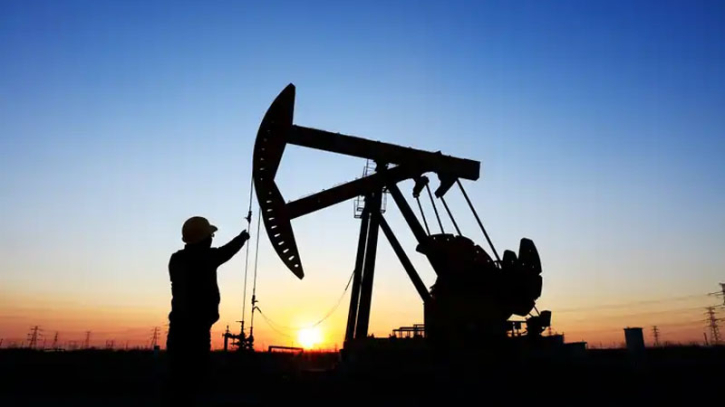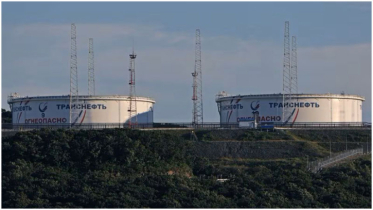Citi sees Oil prices falling to $70 range in Q3 2024

Oil prices have pulled back sharply to a three-month low as a combination of demand concerns and easing geopolitical premium take a toll. Last week, the Energy Information Administration's (EIA) reported that U.S. crude inventories declined by 1.362 million barrels, smaller than the Wall Street consensus at 1.430 million barrels.
The smaller-than-expected fall came hot on the heels of a large 7.3M-barrel build in U.S. crude stocks in the previous week, the largest weekly increase since February.
Meanwhile, the United Arab Emirates has raised production capacity, with Abu Dhabi National Oil Co. saying in its website it’s able to pump 4.85 million barrels a day, up from 4.65 million a day at the end of last year.
Not surprisingly, part of Wall Street is turning more bearish on the oil price outlook, with Citi analysts cautioning against speculative buying and advising investors to capitalize on any rallies by selling. According to the analysts, the market's perception of geopolitical risks in the Middle East has softened, with investor attention turning to looser fundamentals.
"With crude oil prices now trading over $10/bbl off their highs, we could not rule out some speculative buying, but still believe the right strategy in this balance between geopolitical risks and loosening fundamentals is to sell any rally," they explained.
Citi has forecast that oil prices will average $86 per barrel in the second quarter, slightly higher than current Brent price at $83 per barrel, but fall to $74 per barrel in the third quarter.
The energy sector is, however, still in good shape, with only Communication Services and Utilities outpacing its gains. Energy stocks have lost some momentum over the past month, with the Energy Select Sector SPDR Fund (NYSEARCA:XLE) down -3.6% over the past 30 days compared to a 1.2% gain by the S&P 500. Still, the sector is up 11.9% in the year-to-date compared to a 9.5% return by the broad-market benchmark. Traders are also not betting heavily against oil and gas stocks with just 2.65% of outstanding shares sold short. Short interest is, however, higher in the oilfield services sector with Schlumberger Limited (NYSE:SLB) the most-shorted energy stock with 7.26% of its shares sold short; Halliburton (NYSE:HAL) at 6.50% of shares float while Baker Hughes (NYSE:BKR)) has short interest at 5.74%.
Demand Fears Overblown
Commodity analysts at Standard Chartered have argued that the demand fears acting as headwinds on oil prices are overblown. StanChart has pointed out that oil prices are currently trading well below OPEC’s preferred level of at least $90 per barrel, meaning we are likely to see production cuts extended for at least another month when OPEC ministers meet in June.
StanChart has conducted a highly unscientific straw poll of traders and that weak U.S. transportation fuel demand has become a primary concern. The EIA estimates that U.S. gasoline demand declined 4.4% Y/Y in April, a number that has triggered a rapid pivot by speculative funds towards the short side of the market. StanChart has, however, pointed out that there has been a systemic downwards bias in estimates of U.S. fuel demand, with actual gasoline demand exceeding estimates in 22 of the past 24 months, while distillate demand (mainly diesel) has been revised higher in all of the past 24 months. StanChart believes the latest EIA estimate for April gasoline demand is too low with actual demand likely to surprise to the upside.
Meanwhile, the commodity analysts have pointed out that OPEC+ has room to increase output by over 1 mb/d in the third quarter without upsetting global oil balances, meaning global markets can comfortably absorb the UAE’s production increase of 200,000 barrels per day.
Another bullish catalyst: India’s oil demand remains healthy. India’s oil demand in April averaged 5.295 mb/d, good for 6.3% Y/Y growth, data by the Government of India’s Petroleum Planning and Analysis Cell (PPAC) has revealed. Fuel demand growth was mixed, with gasoline demand jumping 14.1% Y/Y while diesel demand grew at a more sluggish 1.4% clip. StanChart has forecast that India’s oil demand will increase by 265 kb/d Y/Y in 2024, slower than April’s 313,000 Y/Y increase but significantly faster than the International Energy Agency’s (IEA’s) forecast of 180 kb/d growth.
.png)




